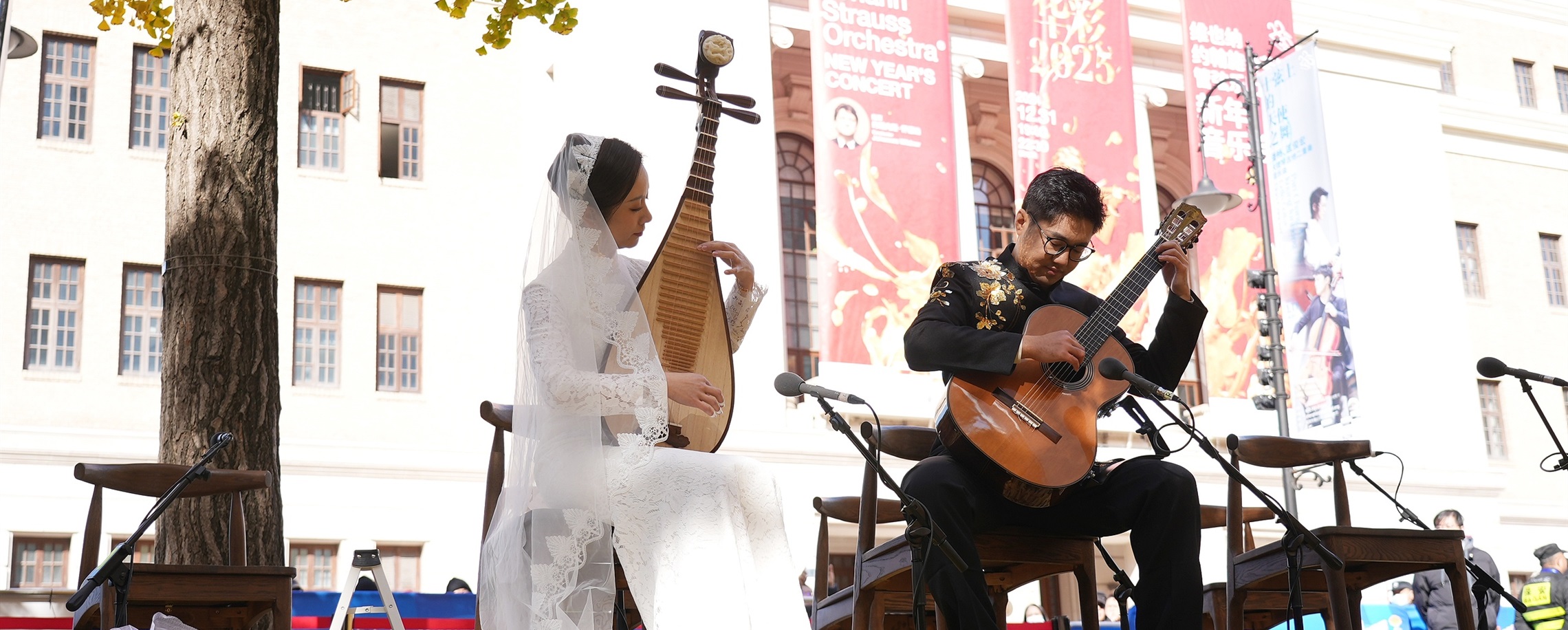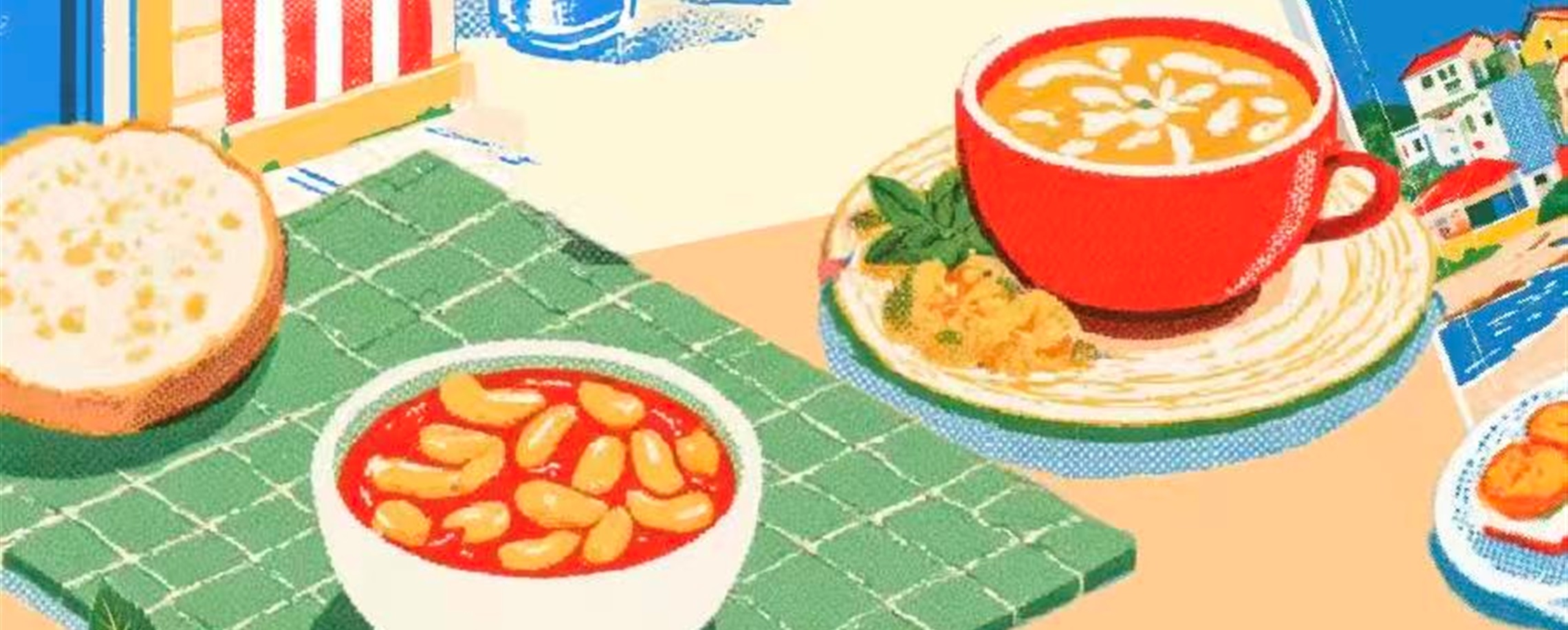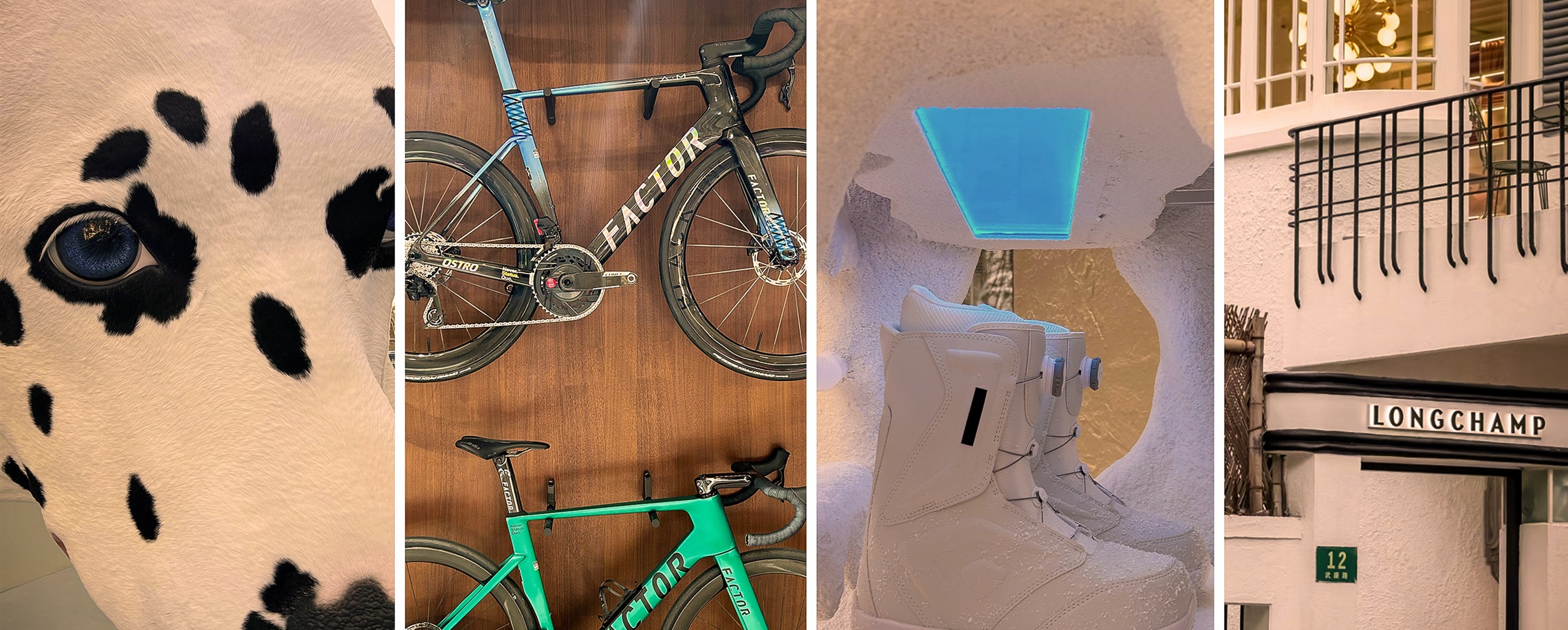Welcome to Nanjing Road East, where culture and city life meet in spectacular style. Beyond its famous shopping arcades lies a treasure trove of theaters, museums, and historic landmarks, each revealing a different facet of Shanghai's story.
Here, world-class theaters share the skyline with historic landmarks, and traditional operas echo beside futuristic digital art. This business district promises an unforgettable journey through time, creativity, and the rhythm of the modern metropolis.
Start Point: Great World (Da Shi Jie) & Gong Stage (大世界&共舞台)
Opened in 1917 by Huang Chujiu, the Great World embodied Shanghai's joyful urban life as the "largest amusement center in the Far East." Inside, floors, theaters, games, and music halls drew thousands daily. Today, it thrives as a hub for traditional arts and creative performances.
Within its historic complex stands Gong Stage, originally one of Shanghai's "Four Great Peking Opera Theaters," now reborn as a dynamic venue for modern musicals and contemporary stage productions. Its updated stagecraft and lighting preserve the intimacy of its early architecture while connecting new audiences to Shanghai's enduring spirit of performance and reinvention.
Address: 1 Xizang Rd S. 西藏南路1号
![[Hai Streets] A Heritage-Rich Stroll From People's Square to the Bund](https://obj.shine.cn/files/2025/11/02/83880842-8551-451b-9fca-0a60357833a6_0.jpg)
Virtual Shanghai
The Great World (Da Shi Jie) (1917)
![[Hai Streets] A Heritage-Rich Stroll From People's Square to the Bund](https://obj.shine.cn/files/2025/11/02/0c1a7dc8-54f5-4357-844d-d395f77e41d0_0.jpg)
Virtual Shanghai
![[Hai Streets] A Heritage-Rich Stroll From People's Square to the Bund](https://obj.shine.cn/files/2025/11/02/eb7d423c-9918-4e0e-b8cf-db805edbedc8_0.jpg)
CFP
The current exterior of the Great World
![[Hai Streets] A Heritage-Rich Stroll From People's Square to the Bund](https://obj.shine.cn/files/2025/11/02/0b944f2d-d8c3-4cd9-8196-26bf8e3e0fc9_0.jpg)
CFP
The interior of the Great World
1st Stop: Shanghai Concert Hall (上海音乐厅)
Known as the "Nanking Theater" at the time of its opening in 1930, this neoclassical landmark was moved 66 meters in 2003 to safeguard it from subway development. Its acoustics remain among the city's best, hosting orchestras, jazz nights, and film concerts.
Address: 523 Yan'an Rd E. 延安东路523号
![[Hai Streets] A Heritage-Rich Stroll From People's Square to the Bund](https://obj.shine.cn/files/2025/11/02/0327cefe-a203-448e-abc3-c33a67661482_0.jpg)
Virtual Shanghai
![[Hai Streets] A Heritage-Rich Stroll From People's Square to the Bund](https://obj.shine.cn/files/2025/11/02/e5be8ee8-d7cc-4ed3-9fde-893547128471_0.jpg)
CFP
![[Hai Streets] A Heritage-Rich Stroll From People's Square to the Bund](https://obj.shine.cn/files/2025/11/02/0a631a0b-28ec-4292-b161-9a5664ac8fff_0.jpg)
CFP
Artists perform on the lawn of the Shanghai Concert Hall
![[Hai Streets] A Heritage-Rich Stroll From People's Square to the Bund](https://obj.shine.cn/files/2025/11/02/123a94f8-e5fa-49b0-bfde-3cff532ea37b_0.jpg)
CFP
The interior of the Shanghai Concert Hall
2nd Stop: Shanghai Museum (上海博物馆)
With its signature "round-heaven, square-earth" silhouette, the Shanghai Museum ranks among China's finest cultural institutions. Its ten galleries display bronzes, ceramics, calligraphy, and paintings spanning every dynasty. Beyond preservation, the museum pioneers new curatorial design, cross-border exchanges, and inclusive educational programs, serving as both a cultural repository and a gateway for global dialogue.
Address: 201 People's Ave 人民大道201号
![[Hai Streets] A Heritage-Rich Stroll From People's Square to the Bund](https://obj.shine.cn/files/2025/11/02/0e9cd8ba-9385-46e2-a9fd-4135b3318ddd_0.jpg)
CFP
Shanghai Museum at People's Square
![[Hai Streets] A Heritage-Rich Stroll From People's Square to the Bund](https://obj.shine.cn/files/2025/11/02/e108e1fb-4805-4629-9efb-898d60aa0bc7_0.jpg)
CFP
3rd Stop: Shanghai Grand Theater (上海大剧院)
Since 1998, the Grand Theater's gleaming glass curves have symbolized Shanghai's artistic confidence. It has hosted more than 12,000 performances and 14 million visitors – from world opera houses and philharmonics to homegrown masterpieces. Beyond performance, its public programs and collaborations nurture a creative ecosystem that fuses Chinese tradition with global excellence.
Address: 300 People's Ave 人民大道300号
![[Hai Streets] A Heritage-Rich Stroll From People's Square to the Bund](https://obj.shine.cn/files/2025/11/02/10f773c1-cb2c-49de-b1d1-894ba406a4c8_0.jpg)
CFP
![[Hai Streets] A Heritage-Rich Stroll From People's Square to the Bund](https://obj.shine.cn/files/2025/11/02/204e830f-5507-4823-b577-aeaf69873d7b_0.jpg)
CFP
4th Stop: Shanghai History Museum (上海历史博物馆)
Housed in the former Shanghai Race Club, the Shanghai History Museum traces the city's deep and far-reaching history. Its clock tower and classical Tuscan colonnades have witnessed the city's metamorphosis from treaty port to global metropolis. Inside, 110,000 artifacts tell stories of commerce, architecture, and daily life – from Ming-era cannons and calligraphy to early photographic maps. Through multimedia installations, visitors encounter Shanghai's urban heartbeat across time.
Address: 325 Nanjing Rd W. 南京西路325号
![[Hai Streets] A Heritage-Rich Stroll From People's Square to the Bund](https://obj.shine.cn/files/2025/11/02/4eca295c-3c94-4c5c-8487-8c28b2b46bdd_0.jpg)
Virtual Shanghai
![[Hai Streets] A Heritage-Rich Stroll From People's Square to the Bund](https://obj.shine.cn/files/2025/11/02/550d2b58-db5a-42b5-8516-8e1847cde368_0.jpg)
CFP
![[Hai Streets] A Heritage-Rich Stroll From People's Square to the Bund](https://obj.shine.cn/files/2025/11/02/024e9810-dff8-4c82-a450-0b01ecca14b9_0.jpg)
CFP
"The Hundred Sons Grand Wedding Sedan Chair," donated by Zhou Zongyu, on display at the Shanghai History Museum
5th Stop: The Grand Theater (大光明电影院)
Designed by architect László Hudec in 1932, the Grand Theater defined Shanghai's Art Deco era. It was Asia's first cinema with widescreen projection and stereo sound. During the 1930s, its audiences used "Yi Yi Feng (译意风)" earphone translation systems to follow foreign films in real time. Painstakingly restored in 2008, the building now glows with its original curves, marble floors, and "Hudec cipher" patterns – a timeless tribute to cinema and design.
Address: 216 Nanjing Rd W. 南京西路216号
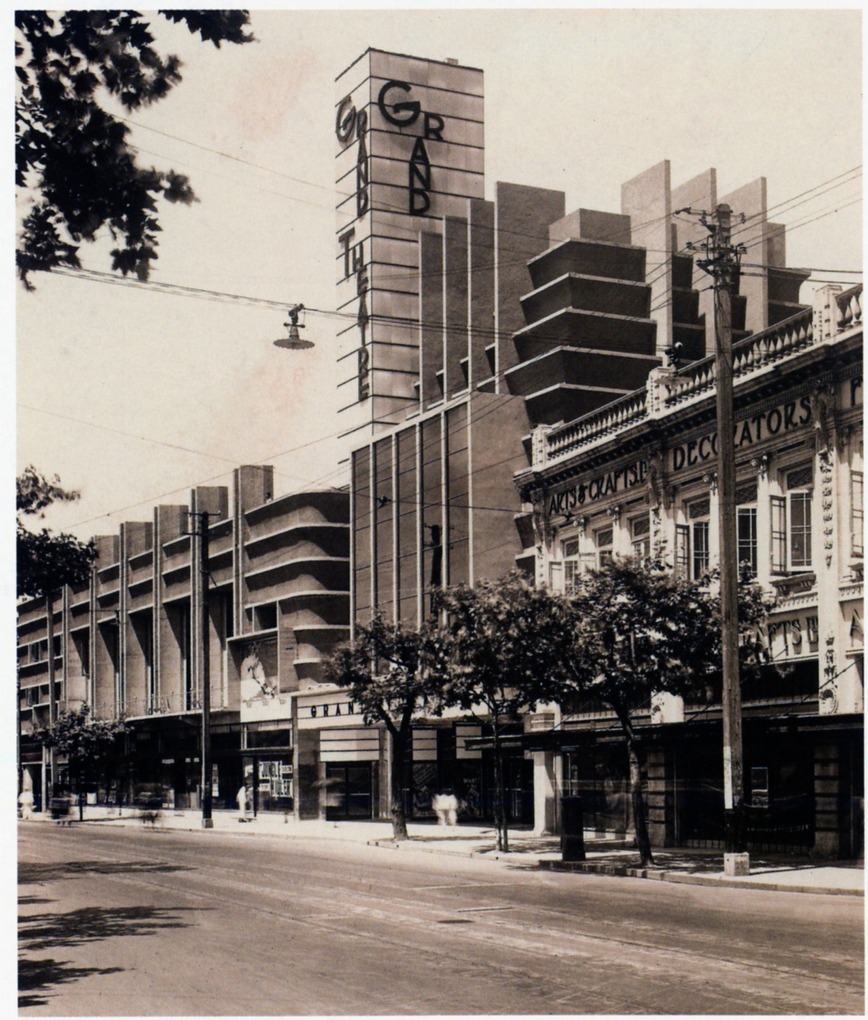
3 Photos | View Slide Show ›
![[Hai Streets] A Heritage-Rich Stroll From People's Square to the Bund](https://obj.shine.cn/files/2025/11/02/7877b499-9ac6-4112-a7b2-fbc83dfc208f_0.jpg)
CFP
Two cosplayers pose in front of the Grand Theater during the screening of a Japanese animation film
![[Hai Streets] A Heritage-Rich Stroll From People's Square to the Bund](https://obj.shine.cn/files/2025/11/02/7dd764c3-5a54-4deb-a366-206755808925_0.jpg)
CFP
6th Stop: Shanghai Sports Building (体育大厦)
Completed in 1928 as the Shanghai Foreign YMCA, this Chicago-style structure blends Western form with Chinese detailing, symbolizing the city's embrace of modern leisure and education. In its early years, it boasted Shanghai's first indoor swimming pool, gymnasium, and ballroom – spaces that shaped a new urban lifestyle for the modern citizen.
Today, the building continues that legacy as the home of the Shanghai Sports Museum, where exhibitions trace the city's athletic history from early gymnastics clubs to Olympic achievements. Combining architectural beauty with cultural vitality, the Sports Building remains a living monument to Shanghai's sporting spirit.
Address: 150 Nanjing Rd W. 南京西路150号
![[Hai Streets] A Heritage-Rich Stroll From People's Square to the Bund](https://obj.shine.cn/files/2025/11/04/f9b2bbe0-201e-4516-b448-e6ba941f2ece_0.jpg)
Imaginechina
Exterior view of the Sports Building
![[Hai Streets] A Heritage-Rich Stroll From People's Square to the Bund](https://obj.shine.cn/files/2025/11/04/de95f98b-df6a-4dfb-8a08-b44b7c2fa113_0.jpg)
Imaginechina
Olympic-themed exhibition area inside the Sports Building
7th Stop: People's Square & People's Park (人民广场&人民公园)
Once the city's racecourse, this heart of modern Shanghai was reshaped into an "urban living room" in the 1990s. Today, it blends art and recreation – tree-lined paths, music fountains, and sculpture plazas surrounded by the city's leading museums and theaters. On weekends, the park hums with family picnics, amateur artists, and the famous marriage market, capturing Shanghai's social pulse in real time.
Address: 185 People's Ave 人民大道185号
![[Hai Streets] A Heritage-Rich Stroll From People's Square to the Bund](https://obj.shine.cn/files/2025/11/04/f8bcfb27-d874-49cf-8911-422c559defcb_0.jpg)
Imaginechina
![[Hai Streets] A Heritage-Rich Stroll From People's Square to the Bund](https://obj.shine.cn/files/2025/11/04/b7f8f0df-0090-4cf4-a1da-a0596539afd5_0.jpg)
CFP
Foreign tourists relax in People's Park
![[Hai Streets] A Heritage-Rich Stroll From People's Square to the Bund](https://obj.shine.cn/files/2025/11/04/643a84bf-e7b2-4fe7-ba61-42fc325a62c5_0.jpg)
CFP
The matchmaking corner at People's Park
8th Stop: Shanghai Urban Planning Exhibition Hall (上海城市规划展示馆)
Opened in 2000 and renovated in 2022, this exhibition hall was China's first museum dedicated to city planning. Its vast scale model of central Shanghai offers a bird's-eye journey through past, present, and future. Themed halls like "Humanistic City," "Innovative City," and "Ecological City" explore how design shapes urban life. It is both an exhibition and a laboratory, inspiring how megacities evolve sustainably.
Address: 100 People's Ave 人民大道100号
![[Hai Streets] A Heritage-Rich Stroll From People's Square to the Bund](https://obj.shine.cn/files/2025/11/04/c3c60d39-be81-4aa6-827e-b1de194941d0_0.jpg)
Imaginechina
Shanghai Urban Planning Exhibition Hall
![[Hai Streets] A Heritage-Rich Stroll From People's Square to the Bund](https://obj.shine.cn/files/2025/11/04/83777e5b-fdef-488a-93cf-a37c35186b49_0.jpg)
CFP
Tourists at the Shanghai Urban Planning Exhibition Hall
![[Hai Streets] A Heritage-Rich Stroll From People's Square to the Bund](https://obj.shine.cn/files/2025/11/04/fdbfcbf2-4a53-4785-9c06-c11f7d650ee0_0.jpg)
CFP
A foreigner with his kids at the Shanghai Urban Planning Exhibition Hall
9th Stop: Tianchan Yifu Theater (天蟾逸夫舞台)
Founded in 1925 as Tianchan Theater, this venue remains Shanghai's cradle of Peking Opera. Known once as the "Far East's No.1 Theater," it hosted legendary performers like Mei Lanfang. Its 2021 renovation restored 1920s architectural details while introducing state-of-the-art acoustics and seating. Today it blends history and innovation, presenting both traditional repertoire and creative reinterpretations of Chinese opera.
Address: 701 Fuzhou Rd 福州路701号
![[Hai Streets] A Heritage-Rich Stroll From People's Square to the Bund](https://obj.shine.cn/files/2025/11/04/519b2ed9-e236-4c9c-9e84-f48095f3fec0_0.jpg)
CFP
![[Hai Streets] A Heritage-Rich Stroll From People's Square to the Bund](https://obj.shine.cn/files/2025/11/04/494a032e-23ff-4a3e-845d-2283c831aaff_0.jpg)
CFP
A Peking Opera performance at Tianchan Yifu Theater
10th Stop: Shanghai Book City (上海书城)
A booklover's haven since 1998, this building is both a bookstore and a cultural venue, offering readings, signings, and browsing among its endless shelves. Its giant glass façade glows like a beacon for urban readers.
Address: 465 Fuzhou Rd 福州路465号
![[Hai Streets] A Heritage-Rich Stroll From People's Square to the Bund](https://obj.shine.cn/files/2025/11/10/32c35ade-7973-4534-99cd-60cd323b5ef5_0.jpg)
Imaginechina
![[Hai Streets] A Heritage-Rich Stroll From People's Square to the Bund](https://obj.shine.cn/files/2025/11/06/7f942d0e-a3d2-4ae0-8f83-dcb1dbd1240a_0.jpg)
Imaginechina
Shanghai Book City at night
11th Stop: Great Theater of China (中国大戏院)
Opened in 1930 as "Sanxing Stage," this theater hosted Shanghai's opera masters and became one of its "Four Great Peking Opera Theaters." Renovated in 2018 under heritage standards, the theater combines 1930s elegance with modern lighting and acoustics. It continues to present opera, drama, and cross-genre productions, preserving the artistic depth that once defined Shanghai's theatrical golden age.
Address: 704 Niuzhuang Rd 牛庄路704号
![[Hai Streets] A Heritage-Rich Stroll From People's Square to the Bund](https://obj.shine.cn/files/2025/11/10/81759b13-5f1c-4edf-bc90-8c3530a6db4f_0.jpg)
Ti Gong
Great Theater of China at night
The interior of the Great Theater of China
12th Stop: Bund Central (外滩·中央)
Bund Central fuses four historic buildings, the Central Department Store, and the Meilun, Huaqiao, and Xinkang Buildings, under a spectacular 4,000m² glass dome. The dome's 12,000 LED lights transform it into a canvas for digital art and public events. Since its phased renovations, Bund Central has become a "second façade" to the Bund, a place where heritage, shopping, and community interact through architecture and light.
Address: 123-139 Nanjing Rd E. 南京东路123-139号
![[Hai Streets] A Heritage-Rich Stroll From People's Square to the Bund](https://obj.shine.cn/files/2025/11/10/f9ca9d08-9625-484f-a53e-f96a7408dc0e_0.jpg)
Imaginechina
A pet pop-up event at the Bund Central
![[Hai Streets] A Heritage-Rich Stroll From People's Square to the Bund](https://obj.shine.cn/files/2025/11/10/01c0fdc7-490d-4fa8-af32-bbbe1566c8a8_0.jpg)
Imaginechina
A live performance at the Bund Central
13th Stop: Fairmont Peace Hotel (和平饭店)
At the meeting point of the Bund and Nanjing Road, the Peace Hotel remains a landmark of Shanghai style. Its two buildings, the North (Cathay Hotel, 1929) and the South (Palace Hotel, 1908), embody Art Deco grandeur. The hotel hosted statesmen and celebrities, from Charlie Chaplin to the Clintons. After its heritage restoration and the TV series Blossoms Shanghai, the hotel's British Suite and "Flourishing City"-themed teas revived its legend as a living symbol of Old Shanghai charm.
Address: 20 Nanjing Rd E. 南京东路20号
![[Hai Streets] A Heritage-Rich Stroll From People's Square to the Bund](https://obj.shine.cn/files/2025/11/10/a8af471b-c283-4939-93e4-7ba18d7fb4c4_0.jpg)
Virtual Shanghai
The Cathay Hotel/Sassoon House and the Bank of China (1937)
![[Hai Streets] A Heritage-Rich Stroll From People's Square to the Bund](https://obj.shine.cn/files/2025/11/10/5eedda77-67cd-44ac-a49c-03dc392f29c7_0.jpg)
Virtual Shanghai
The Cathay Hotel bedroom (1930)
![[Hai Streets] A Heritage-Rich Stroll From People's Square to the Bund](https://obj.shine.cn/files/2025/11/10/7bff9e7e-212b-435d-b994-47392a403743_0.jpg)
Virtual Shanghai
The Bund near the Palace Hotel (匯中飯店) (1906)
![[Hai Streets] A Heritage-Rich Stroll From People's Square to the Bund](https://obj.shine.cn/files/2025/11/10/06737010-d6fa-4253-9f48-1857eba0f8ca_0.jpg)
CFP
![[Hai Streets] A Heritage-Rich Stroll From People's Square to the Bund](https://obj.shine.cn/files/2025/11/10/9d422489-3075-409e-a295-2db5004804e3_0.jpg)
CFP
Panoramic view of the Fairmont Peace Hotel
![[Hai Streets] A Heritage-Rich Stroll From People's Square to the Bund](https://obj.shine.cn/files/2025/11/10/78d38efa-d22a-46d8-ac24-ac4c805d8989_0.jpg)
CFP
The lobby of the Fairmont Peace Hotel
![[Hai Streets] A Heritage-Rich Stroll From People's Square to the Bund](https://obj.shine.cn/files/2025/11/10/00d0f06d-2f3f-405a-8e31-f2266d965105_0.jpg)
CFP
A suite in the Fairmont Peace Hotel
14th Stop: Rockbund Art Museum (外滩美术馆)
Opened in 2010 in the historic Royal Asiatic Society Building (1932), the Rockbund Art Museum is a nonprofit space for contemporary art on the Bund. Restored by David Chipperfield Architects, the building preserves its Art Deco façade while offering open, light-filled galleries.
RAM's exhibitions and programs explore Asia's cultural connections with the world through its idea of "archipelago thinking." Combining heritage and innovation, it has become a key platform for creative exchange in modern Shanghai.
Address: 20 Huqiu Rd 虎丘路20号
![[Hai Streets] A Heritage-Rich Stroll From People's Square to the Bund](https://obj.shine.cn/files/2025/11/10/57c59f3d-109f-4881-8506-a06f22966927_0.jpg)
Ti Gong
Front view of the Rockbund Art Museum
![[Hai Streets] A Heritage-Rich Stroll From People's Square to the Bund](https://obj.shine.cn/files/2025/11/10/7cd958aa-2298-48bf-8eea-88cc25167a73_0.jpg)
Ti Gong
Rear view of the Rockbund Art Museum
15th Stop: Rockbund (外滩源) & Holy Trinity Cathedral (圣三一堂)
Where the Huangpu River meets Suzhou Creek lies "Bund Origin," the birthplace of Shanghai's modern identity. Spanning 16 hectares and housing 15 buildings from 1920 to 1936, it was the site of the first British Consulate and early financial houses. The district is now revitalized through projects such as Rockbund, combining preservation and cultural reuse to host exhibitions and festivals. Amid this ensemble rise the Gothic spires of Holy Trinity Cathedral (1869), its 48-meter tower and stained glass recalling Victorian grace.
Address: 185 Yuanmingyuan Rd 圆明园路185号
![[Hai Streets] A Heritage-Rich Stroll From People's Square to the Bund](https://obj.shine.cn/files/2025/11/11/be023a8c-45dd-4e1c-9533-5fde0af0f8b9_0.jpg)
Imaginechina
The Labubu exhibition held at Rockbund
![[Hai Streets] A Heritage-Rich Stroll From People's Square to the Bund](https://obj.shine.cn/files/2025/11/11/08cdba0c-4b4a-420f-8ef8-9df43a939579_0.jpg)
Imaginechina
The German-style market at Rockbund
End Point: Shanghai Jiushi International Art Center (久事国际艺术中心/外滩一号艺术中心)
Located in the 1916 Asia Building, the southernmost gateway of the Bund, Shanghai Jiushi International Art Center reimagines a century-old landmark as a contemporary art space. Originally designed by Moorhead&Halse and built by Yuchangtai Construction and bought by the Asiatic Petroleum Company in 1917, the eight-story building (extended in 1939) now hosts rotating exhibitions, talks, and public programs celebrating the dialogue between history and modern art. Its stately façade and riverside views make it one of the Bund's most elegant cultural renewals.
Address: 1 Zhongshan Rd E1 中山东一路1号
![[Hai Streets] A Heritage-Rich Stroll From People's Square to the Bund](https://obj.shine.cn/files/2025/11/12/8a9019cc-ac7d-4717-93a1-130623df84cf_0.jpg)
Imaginechina
Shanghai Jiushi International Art Center
 2025-11-21
2025-11-21
 2025-11-20
2025-11-20
 2025-11-20
2025-11-20



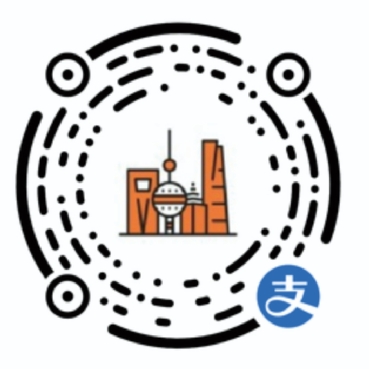



![[Hai Streets] A Heritage-Rich Stroll From People's Square to the Bund](https://obj.shine.cn/files/2025/11/02/83880842-8551-451b-9fca-0a60357833a6_0.jpg)
![[Hai Streets] A Heritage-Rich Stroll From People's Square to the Bund](https://obj.shine.cn/files/2025/11/02/0c1a7dc8-54f5-4357-844d-d395f77e41d0_0.jpg)
![[Hai Streets] A Heritage-Rich Stroll From People's Square to the Bund](https://obj.shine.cn/files/2025/11/02/eb7d423c-9918-4e0e-b8cf-db805edbedc8_0.jpg)
![[Hai Streets] A Heritage-Rich Stroll From People's Square to the Bund](https://obj.shine.cn/files/2025/11/02/0b944f2d-d8c3-4cd9-8196-26bf8e3e0fc9_0.jpg)
![[Hai Streets] A Heritage-Rich Stroll From People's Square to the Bund](https://obj.shine.cn/files/2025/11/02/0327cefe-a203-448e-abc3-c33a67661482_0.jpg)
![[Hai Streets] A Heritage-Rich Stroll From People's Square to the Bund](https://obj.shine.cn/files/2025/11/02/e5be8ee8-d7cc-4ed3-9fde-893547128471_0.jpg)
![[Hai Streets] A Heritage-Rich Stroll From People's Square to the Bund](https://obj.shine.cn/files/2025/11/02/0a631a0b-28ec-4292-b161-9a5664ac8fff_0.jpg)
![[Hai Streets] A Heritage-Rich Stroll From People's Square to the Bund](https://obj.shine.cn/files/2025/11/02/123a94f8-e5fa-49b0-bfde-3cff532ea37b_0.jpg)
![[Hai Streets] A Heritage-Rich Stroll From People's Square to the Bund](https://obj.shine.cn/files/2025/11/02/0e9cd8ba-9385-46e2-a9fd-4135b3318ddd_0.jpg)
![[Hai Streets] A Heritage-Rich Stroll From People's Square to the Bund](https://obj.shine.cn/files/2025/11/02/e108e1fb-4805-4629-9efb-898d60aa0bc7_0.jpg)
![[Hai Streets] A Heritage-Rich Stroll From People's Square to the Bund](https://obj.shine.cn/files/2025/11/02/10f773c1-cb2c-49de-b1d1-894ba406a4c8_0.jpg)
![[Hai Streets] A Heritage-Rich Stroll From People's Square to the Bund](https://obj.shine.cn/files/2025/11/02/204e830f-5507-4823-b577-aeaf69873d7b_0.jpg)
![[Hai Streets] A Heritage-Rich Stroll From People's Square to the Bund](https://obj.shine.cn/files/2025/11/02/4eca295c-3c94-4c5c-8487-8c28b2b46bdd_0.jpg)
![[Hai Streets] A Heritage-Rich Stroll From People's Square to the Bund](https://obj.shine.cn/files/2025/11/02/550d2b58-db5a-42b5-8516-8e1847cde368_0.jpg)
![[Hai Streets] A Heritage-Rich Stroll From People's Square to the Bund](https://obj.shine.cn/files/2025/11/02/024e9810-dff8-4c82-a450-0b01ecca14b9_0.jpg)

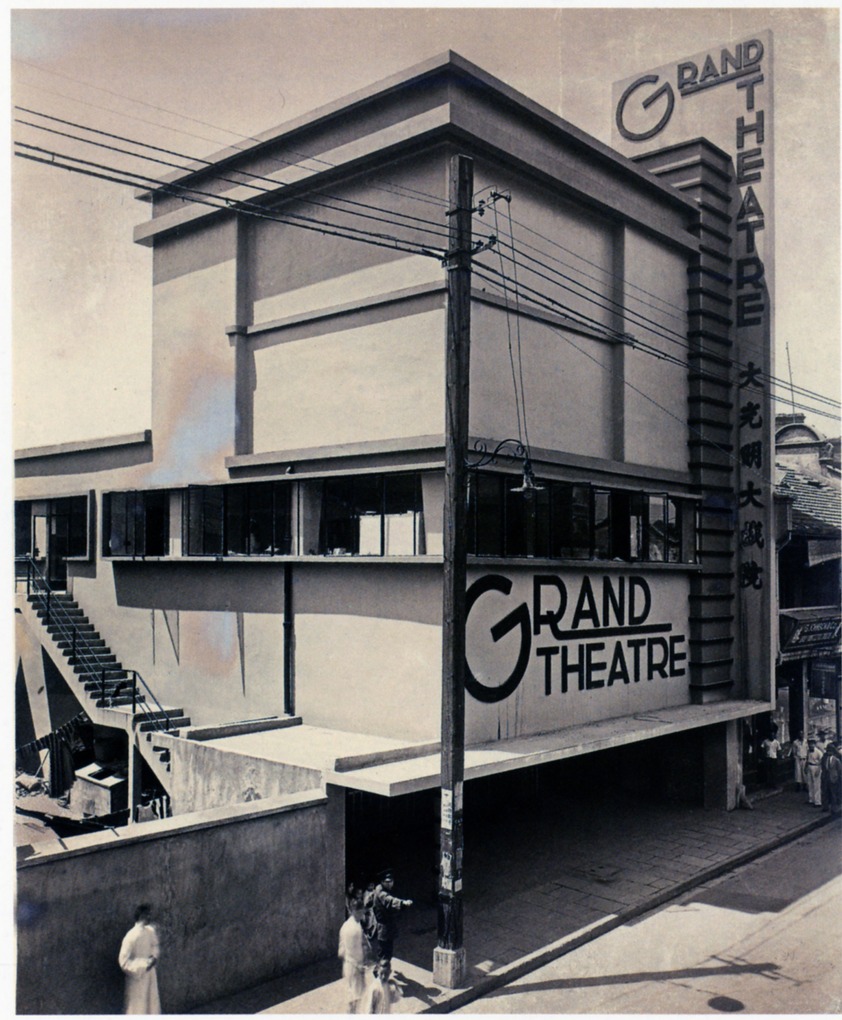
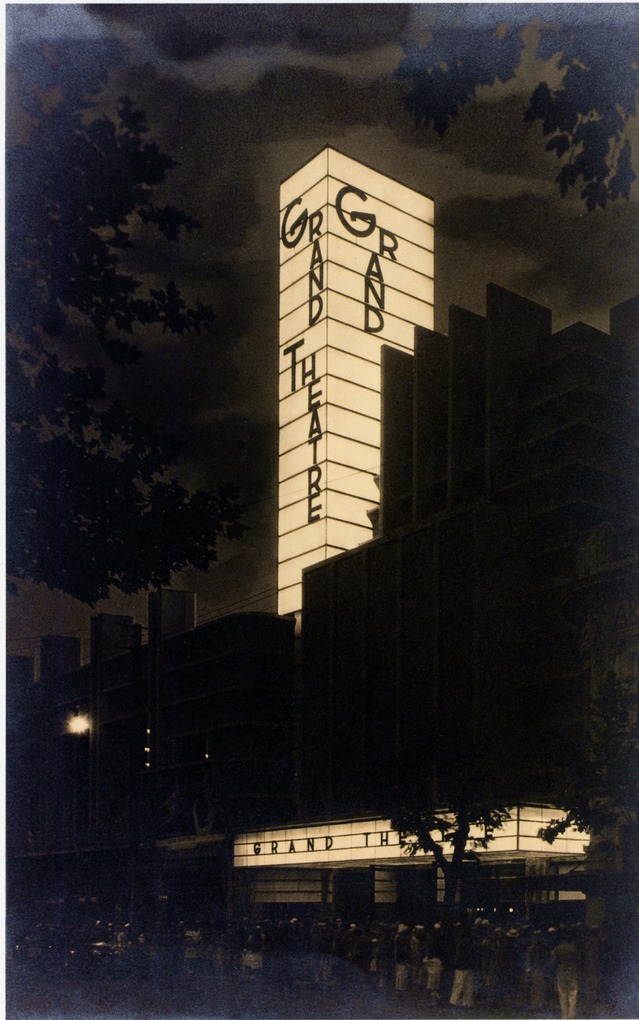
![[Hai Streets] A Heritage-Rich Stroll From People's Square to the Bund](https://obj.shine.cn/files/2025/11/02/7877b499-9ac6-4112-a7b2-fbc83dfc208f_0.jpg)
![[Hai Streets] A Heritage-Rich Stroll From People's Square to the Bund](https://obj.shine.cn/files/2025/11/02/7dd764c3-5a54-4deb-a366-206755808925_0.jpg)
![[Hai Streets] A Heritage-Rich Stroll From People's Square to the Bund](https://obj.shine.cn/files/2025/11/04/f9b2bbe0-201e-4516-b448-e6ba941f2ece_0.jpg)
![[Hai Streets] A Heritage-Rich Stroll From People's Square to the Bund](https://obj.shine.cn/files/2025/11/04/de95f98b-df6a-4dfb-8a08-b44b7c2fa113_0.jpg)
![[Hai Streets] A Heritage-Rich Stroll From People's Square to the Bund](https://obj.shine.cn/files/2025/11/04/f8bcfb27-d874-49cf-8911-422c559defcb_0.jpg)
![[Hai Streets] A Heritage-Rich Stroll From People's Square to the Bund](https://obj.shine.cn/files/2025/11/04/b7f8f0df-0090-4cf4-a1da-a0596539afd5_0.jpg)
![[Hai Streets] A Heritage-Rich Stroll From People's Square to the Bund](https://obj.shine.cn/files/2025/11/04/643a84bf-e7b2-4fe7-ba61-42fc325a62c5_0.jpg)
![[Hai Streets] A Heritage-Rich Stroll From People's Square to the Bund](https://obj.shine.cn/files/2025/11/04/c3c60d39-be81-4aa6-827e-b1de194941d0_0.jpg)
![[Hai Streets] A Heritage-Rich Stroll From People's Square to the Bund](https://obj.shine.cn/files/2025/11/04/83777e5b-fdef-488a-93cf-a37c35186b49_0.jpg)
![[Hai Streets] A Heritage-Rich Stroll From People's Square to the Bund](https://obj.shine.cn/files/2025/11/04/fdbfcbf2-4a53-4785-9c06-c11f7d650ee0_0.jpg)
![[Hai Streets] A Heritage-Rich Stroll From People's Square to the Bund](https://obj.shine.cn/files/2025/11/04/519b2ed9-e236-4c9c-9e84-f48095f3fec0_0.jpg)
![[Hai Streets] A Heritage-Rich Stroll From People's Square to the Bund](https://obj.shine.cn/files/2025/11/04/494a032e-23ff-4a3e-845d-2283c831aaff_0.jpg)
![[Hai Streets] A Heritage-Rich Stroll From People's Square to the Bund](https://obj.shine.cn/files/2025/11/10/32c35ade-7973-4534-99cd-60cd323b5ef5_0.jpg)
![[Hai Streets] A Heritage-Rich Stroll From People's Square to the Bund](https://obj.shine.cn/files/2025/11/06/7f942d0e-a3d2-4ae0-8f83-dcb1dbd1240a_0.jpg)
![[Hai Streets] A Heritage-Rich Stroll From People's Square to the Bund](https://obj.shine.cn/files/2025/11/10/81759b13-5f1c-4edf-bc90-8c3530a6db4f_0.jpg)
![[Hai Streets] A Heritage-Rich Stroll From People's Square to the Bund](https://obj.shine.cn/files/2025/11/10/ca4d2cc1-69e6-485e-abf4-f3561e30dc3b_0.jpg)
![[Hai Streets] A Heritage-Rich Stroll From People's Square to the Bund](https://obj.shine.cn/files/2025/11/10/f9ca9d08-9625-484f-a53e-f96a7408dc0e_0.jpg)
![[Hai Streets] A Heritage-Rich Stroll From People's Square to the Bund](https://obj.shine.cn/files/2025/11/10/01c0fdc7-490d-4fa8-af32-bbbe1566c8a8_0.jpg)
![[Hai Streets] A Heritage-Rich Stroll From People's Square to the Bund](https://obj.shine.cn/files/2025/11/10/a8af471b-c283-4939-93e4-7ba18d7fb4c4_0.jpg)
![[Hai Streets] A Heritage-Rich Stroll From People's Square to the Bund](https://obj.shine.cn/files/2025/11/10/5eedda77-67cd-44ac-a49c-03dc392f29c7_0.jpg)
![[Hai Streets] A Heritage-Rich Stroll From People's Square to the Bund](https://obj.shine.cn/files/2025/11/10/7bff9e7e-212b-435d-b994-47392a403743_0.jpg)
![[Hai Streets] A Heritage-Rich Stroll From People's Square to the Bund](https://obj.shine.cn/files/2025/11/10/06737010-d6fa-4253-9f48-1857eba0f8ca_0.jpg)
![[Hai Streets] A Heritage-Rich Stroll From People's Square to the Bund](https://obj.shine.cn/files/2025/11/10/9d422489-3075-409e-a295-2db5004804e3_0.jpg)
![[Hai Streets] A Heritage-Rich Stroll From People's Square to the Bund](https://obj.shine.cn/files/2025/11/10/78d38efa-d22a-46d8-ac24-ac4c805d8989_0.jpg)
![[Hai Streets] A Heritage-Rich Stroll From People's Square to the Bund](https://obj.shine.cn/files/2025/11/10/00d0f06d-2f3f-405a-8e31-f2266d965105_0.jpg)
![[Hai Streets] A Heritage-Rich Stroll From People's Square to the Bund](https://obj.shine.cn/files/2025/11/10/57c59f3d-109f-4881-8506-a06f22966927_0.jpg)
![[Hai Streets] A Heritage-Rich Stroll From People's Square to the Bund](https://obj.shine.cn/files/2025/11/10/7cd958aa-2298-48bf-8eea-88cc25167a73_0.jpg)
![[Hai Streets] A Heritage-Rich Stroll From People's Square to the Bund](https://obj.shine.cn/files/2025/11/11/be023a8c-45dd-4e1c-9533-5fde0af0f8b9_0.jpg)
![[Hai Streets] A Heritage-Rich Stroll From People's Square to the Bund](https://obj.shine.cn/files/2025/11/11/08cdba0c-4b4a-420f-8ef8-9df43a939579_0.jpg)
![[Hai Streets] A Heritage-Rich Stroll From People's Square to the Bund](https://obj.shine.cn/files/2025/11/12/8a9019cc-ac7d-4717-93a1-130623df84cf_0.jpg)






